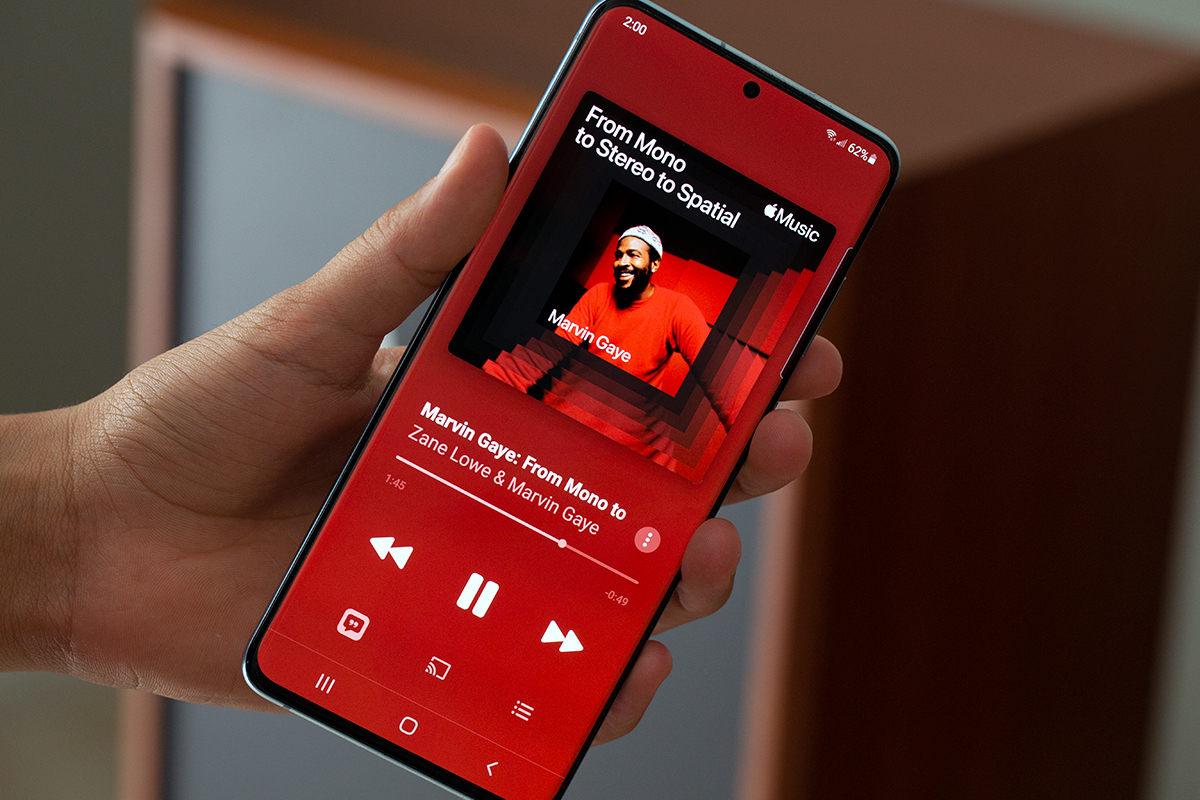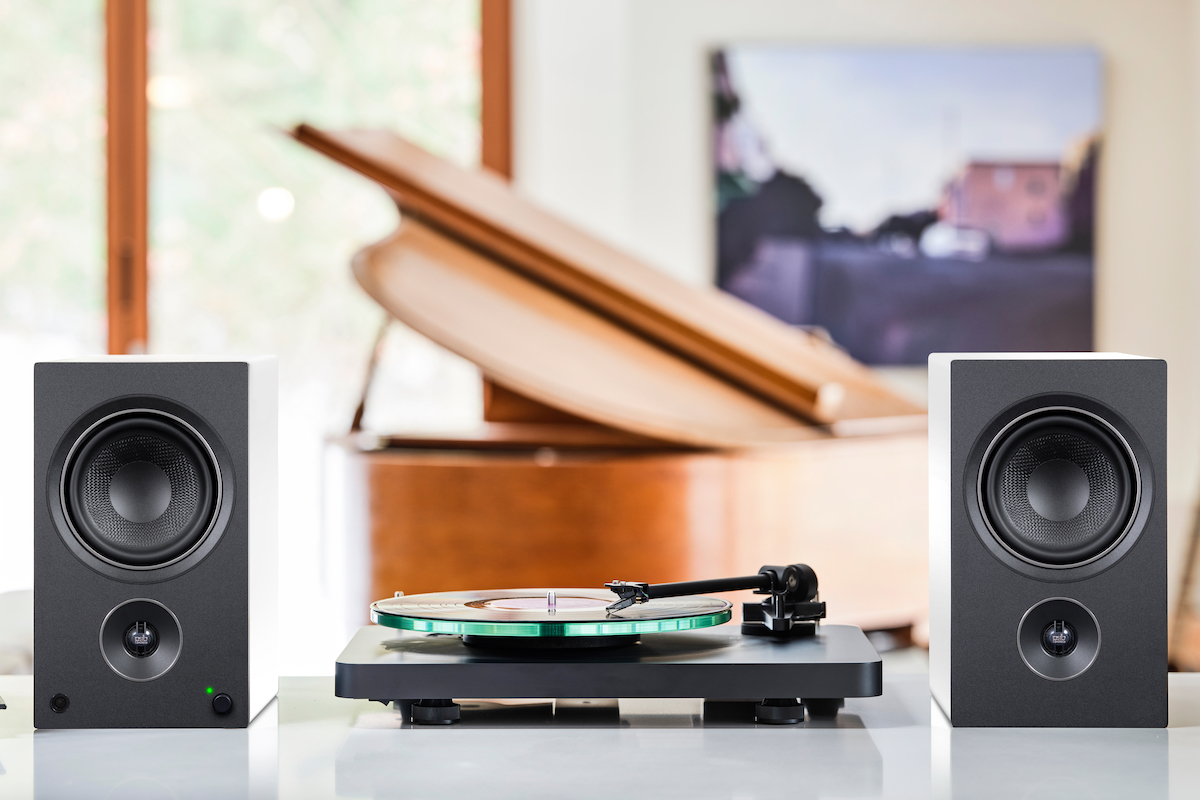
- Written by: Gordon Brockhouse
We’re just past the halfway point of 2021, but I think I’ve already heard my favorite album of the year. On August 6, Impex Records will release Clique, an album of jazz standards by Patricia Barber, on MQA CD, SACD, and hi-rez download. Stereo and 5.1 surround-sound mixes will be included on the SACD, and available as hi-rez downloads. Clique will also be streamed by Apple Music, Spotify, Tidal, and Qobuz. Coming later this year is a 33rpm LP; a 45rpm LP and a reel-to-reel tape release will follow in 2022.
Read more: Encore! Encore! An Interview with Patricia Barber, Jim Anderson, and Ulrike Schwarz

- Written by: Gordon Brockhouse
First Amazon, then Spotify, and now Apple. With the company’s May 17 announcement that it was planning to make the 75 million songs in its Apple Music catalog available in lossless format, and that a substantial number of tracks would be available in high resolution (up to 24-bit/192kHz ALAC), all the major streaming services have now joined the lossless party.

- Written by: Gordon Brockhouse
The past five years have been mighty tumultuous for Bowers & Wilkins. In May 2016, the venerable British loudspeaker brand was acquired by EVA Automation Inc., a Silicon Valley startup. The two companies joined forces to develop a series of wireless audio products, which they unveiled in April 2019.
Read more: Moving Forward with Formation: An Interview with Andy Kerr of Bowers & Wilkins

- Written by: Gordon Brockhouse
I’m old enough to remember a time, in the 1970s and ’80s, when component hi-fi was a mainstream thing. It seemed everyone either owned or planned to soon buy a stereo system.

- Written by: Gordon Brockhouse
It’s hard for people who are passionate about something to imagine others not sharing their enthusiasm. How could anyone not appreciate small-batch bourbons? Or 35mm rangefinder cameras? Or vintage wristwatches?

- Written by: Gordon Brockhouse
For his February 1 “SoundStage! UK” column on SoundStage! Hi-Fi, Ken Kessler wrote an entertaining (but slightly unhinged) rant, “I Hate Streaming.” Characteristically, Ken spiced up his piece with colorful prose. “As for streaming, I can’t even be bothered to dignify it by hating it,” he proclaimed. “Rather, I prefer to disrespect it with the ultimate insult: I couldn’t care less about it. . . . Indeed, when suffering insomnia, I think of streaming. Then, when I invariably wake up at 3 a.m., being of pensioner age, streaming is exactly what I do. In the loo.”

- Written by: Gordon Brockhouse
During the 2018 Toronto Audiofest, I had an interesting conversation with an industry colleague about active speakers and streaming music. As previously observed on Simplifi, my living room can’t accommodate a conventional component system comprising amps and passive loudspeakers. Nor can it accommodate physical media such as CDs and LPs. For that reason, I’ve built my main hi-fi system around a pair of Elac Navis ARF-51 active speakers ($4599.96/pair, all prices USD), which have 300Wpc of built-in amplification. I stream all my music to the living room over our home network.

- Written by: Gordon Brockhouse
A trick question: What are the most valuable components of your music system? I don’t know about yours, but the most valuable parts of mine are space and time. If that sounds like new-age hokum, stay with me—that insight has a lot to do with how I’ve configured my hi-fi system, how I use it, and the writing I do in this corner of the SoundStage! Network.

- Written by: Gordon Brockhouse
Last spring, I added a new component to my audio wish list: a subwoofer. It happened after I’d conducted an experiment in which I compared my Elac Navis ARF-51 active floorstanding speakers ($4599.98/pair, all prices USD) with a pair of Elac Navis ARB-51 active stand-mounted speakers ($2299.98/pair), the latter augmented by an SVS PB-2000 Pro subwoofer ($899.99). I wanted to find out which would give me better sound: a pair of full-range floorstanders, or a pair of minimonitors plus a sub. The Navises employ the same drivers, crossovers, and amplifiers—in short, that minimum of variables made these two models an ideal test bed for my experiment.

- Written by: Gordon Brockhouse
At the start of 2020 — it seems an age ago — I’d made some ambitious travel plans for the year: In March, I’d take the train to Montreal for the Audiofest; in April, I’d fly to Chicago for AXPONA. In May, I’d jet off to Munich for the High End show. In October I’d stay in my home city to attend the Toronto Audiofest, and in November it would be off to Warsaw for the Audio Video Show.

- Written by: Gordon Brockhouse
It sounds like a nice problem for a speaker maker to have: Some hot new models are launched, and the first batch immediately sells out. That’s what happened when PSB announced powered versions of its acclaimed Alpha P3 and Alpha P5 minimonitors.
- The Critical Component
- Has the Time Come for Surround Music?
- My Top Ten Products of the Last Two Years
- Turning Pro
- All About That Bass
- Gently Down the Stream
- Big Events
- Rules of the Game
- The Name Game
- January 1, 2020: The State of Streaming
- Warsaw’s Audio Video Show 2019, Simplifi’d
- Toronto Audiofest 2019, Simplifi'd
- Hi-Rez à-Go-Go
- Streaming the Classics
- Play Nice Together -- An Interview with Rob Darling of Roon Labs
- Active Voices, Part Three: KEF's Jack Oclee-Brown
- High End 2019, Simplifi'd
- Active Voices, Part Two: Axiom Audio's Andrew Welker
- Montréal Audio Fest Simplifi'd
- Active Voices, Part One: Elac's Andrew Jones
- Let's Keep it Simple
- A Roon of One's Own
- How I Simplifi'd My Wi-Fi
- Are Downloads Dead?
- Hi-Rez Streaming: Tidal vs. Qobuz
- Toronto Audiofest 2018 Simplifi'd
- How I Simplifi'd My Hi-Fi
- Time to Celebrate: Five Years of Google Chromecast
- How Good Can Voice Recognition Get?
- Are Smart Speakers Any Good for Audiophiles?
- High End 2018, Simplifi'd
- Is the Smart Speaker a Dumb Idea?
- What's Up with Apple AirPlay 2?
- The Spotify Dilemma
- CES 2018, Simplifi’d
- Farewell, CES
- Room Tunes
- Social Streaming
- CEDIA 2017, Simplifi’d
- Classical Prime Time
- The Röst Reconsidered
- High End 2017, Simplifi'd
- Vinyl: There's an App for That
- Metadata: Life with Roon
- The Internet and Audio: The Good, the Bad, and the Impossible
- The State of Streaming
- CES 2017, Simplifi'd
- Why "Simplifi"
SoundStage! Simplifi is part of
All contents available on this website are copyrighted by SoundStage!® and Schneider Publishing Inc., unless otherwise noted. All rights reserved.
This site was designed by RocketTheme, Karen Fanas, and The SoundStage! Network.
To contact us, please e-mail info@soundstagenetwork.com





